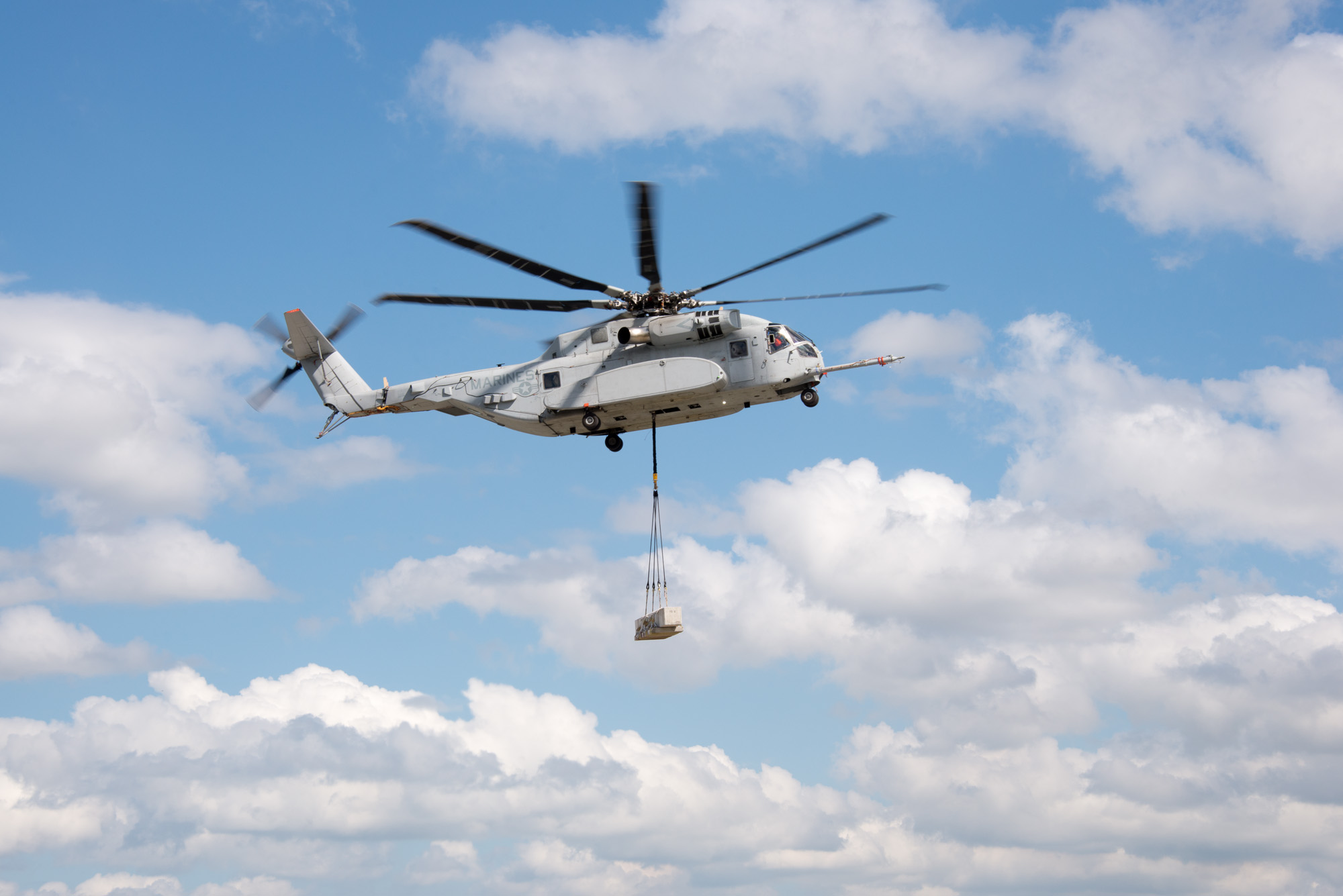
The Marine Corps is advancing through its test plan for the Sikorsky CH-53K heavy lift helicopter faster than previously planned, with the service successfully carrying a 20,000-pound load externally for the first time on May 26.
The heavy lift helicopter program office at Naval Air Systems Command (NAVAIR), PMA-261, began with lifting a 12,000-pound external load and moved up to the 20,000-pound load late last month– just shy of the weight of a Joint Light Tactical Vehicle (JLTV). The program office will continue testing at that weight, flying the helicopter at higher speeds and expanding the flight envelop before eventually moving to a 27,000-pound lift, NAVAIR spokesman Billy Ray Brown told USNI News.
During a briefing at the Navy League’s Sea-Air-Space Exposition 2016 in May, Lockheed Martin Vice President of CH-53K Programs Michael Torok said that external load lifts were set to start this month but began early, in April, instead.
At least one of two operational tests – a 27,000-pound external lift and carrying 12,000 pounds externally for 110 nautical miles – will begin by the end of the calendar year, Torok and PMA-261 program manager Col. Henry Vanderborght said at the May 16 briefing.
The helicopter, which replaces the aging CH-53E and should reach initial operational capability in 2019, has already flown 140 knots without carrying an external load, has reached 80 knots with an external load and has gone through live fire testing and component testing to prove it meets survivability requirements.
Torok said in the briefing that the program office has already bought long lead materials to support the first two low-rate initial production (LRIP) lots and that the program hopes to hit Milestone C a year from now, when the program can officially sign its first LRIP contract to begin production. NAVAIR already reviewed the production readiness of the industrial base, and a final Milestone C decision by Pentagon acquisition chief Frank Kendall will be based on test results and a final production readiness review, he added.
Vanderborght called the helo a “significant step increase in capability for the Marine Corps,” with more than three times the lifting capability in the same sized aircraft. The aircraft will also be more reliable, Torok said, thanks to an automated logistics system that monitors aircraft performance, requests feedback from the pilots and funnels the information to the maintainers to make decisions about ordering spares.
Torok said Germany has shown interest in the helicopter to replace its CH-53Gs, and Lockheed-owned Sikorsky is in talks with the country to determine whether the 53K can meet that military’s needs.
In the U.S. Marine Corps, Brown, the NAVAIR spokesman, said that the CH-53K will start replacing the CH-53E in 2019, and the first four fully operational aircraft – complete with logistics, personnel, and training – should be in place later that same year.





